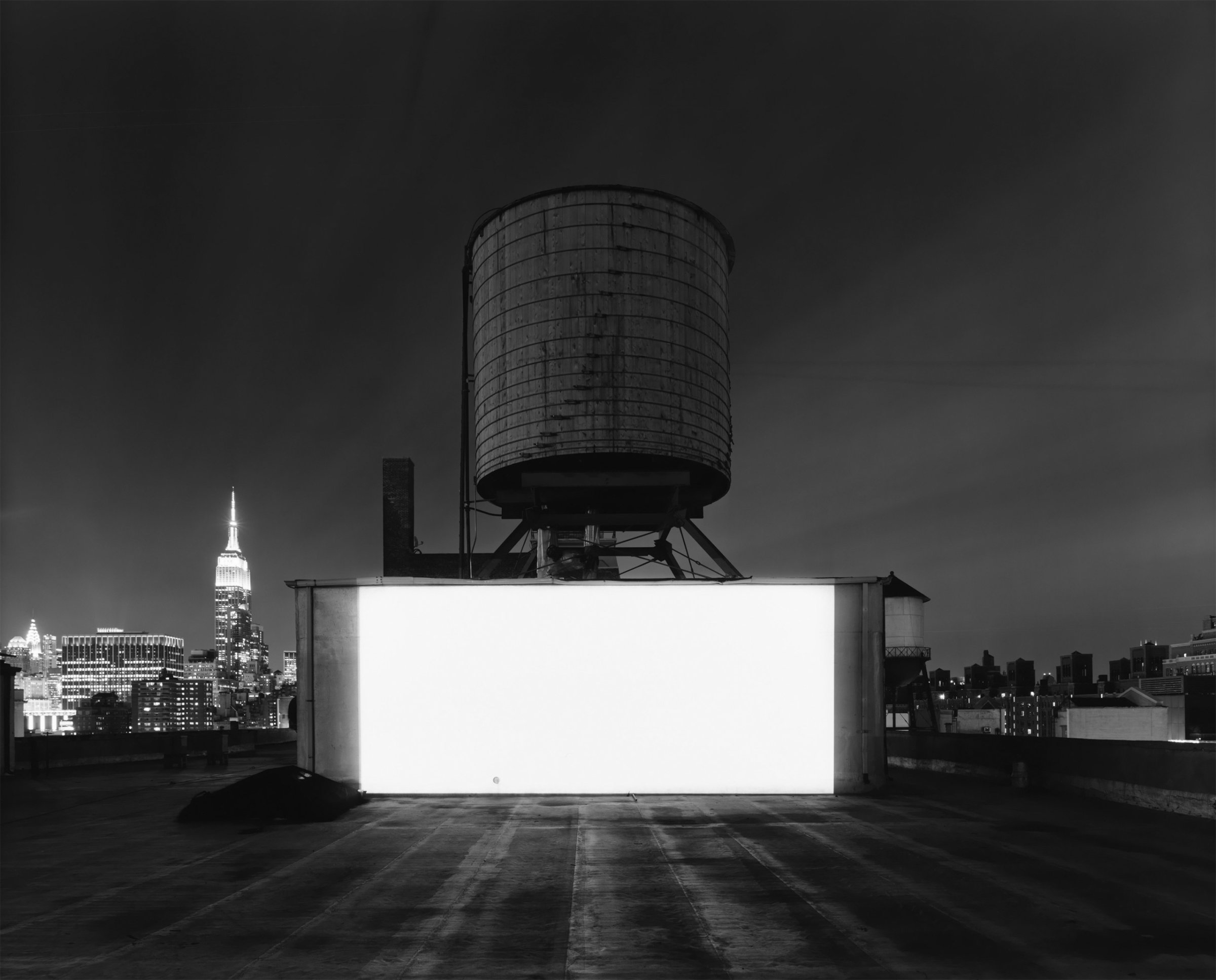
What happens when you capture a whole movie in a single frame? Photographer Hiroshi Sugimoto first posed the question in the 1970s, but the arresting after-effect still captivates him today.
In a new exhibition called Remains to Be Seen, Sugimoto returns to the idea as part of a poetic study of abandoned movie theaters. His technique – which has not changed since the 70s – is achieved by opening the camera’s aperture when a film begins and closing it when it ends. The result gives the screen a bleached-out glow, with a haunting, otherworldly effect.
The idea of using abandoned theaters came to Sugimoto when he stumbled upon a disused movie theater at the Palais de Tokyo, explains Frish Brandt, director of Fraenkel Gallery, which represents the photographer. “That theater is the lynchpin that started the series – but doesn’t look like the deteriorated ones he went on to photograph.”
The intense white-heat effect allows the detail of those theaters – once glorious feats of architecture in their heyday, now fallen to ruin – to be illuminated. Sugimoto tells TIME that the allure of the movie theater is that it represents “pure American culture.”
As with much of his work, Remains to be Seen invites a complex reading. The project is at once a meditation on the deterioration of objects but also time itself, a subject the artist has closely studied during his distinguished career. “There is no decisive moment in my photograph, only the melting of time,” Sugimoto explains.
For this series, Sugimoto personally chose each movie projected onto the screens. From erotic drama Mujo to cult thriller Rosemary’s Baby, the selection is eclectic. But all give a glimpse into the darker side of humanity and, in doing so, hint towards the artist’s apocalyptic vision. “People misunderstand that the end is not coming,” Sugimoto explains. “It has already begun.”
The films he chose also bore relation to the cinemas themselves. The interior of one venue, Franklin Park Theatre in Boston, is very wet due to a leak in the ceiling. “So Sugimoto chose to screen the film Rashomon, where rain plays an important part,” says Brandt. At Paramount Theater in Newark, Sugimoto screened On the Beach. “The picture is about the apocalypse, which is fitting; if the last human being crawled into a theater, the Paramount is what it would look like.”
“But in the end, a movie is simply projected light and what he’s really choosing is if it is 88 minutes or 134 minutes,” Brandt continues. “We don’t see it, but then in much of art we don’t see what makes it what it is.”
Remains to be Seen is being exhibited at Fraenkel Gallery in San Francisco until Oct. 22.
Hiroshi Sugimoto is a photographer born in Japan, currently living in New York.
Myles Little, who edited this photo essay, is a senior photo editor at TIME.
Alexandra Genova is a writer and contributor for TIME LightBox. Follow her on Twitter and Instagram.
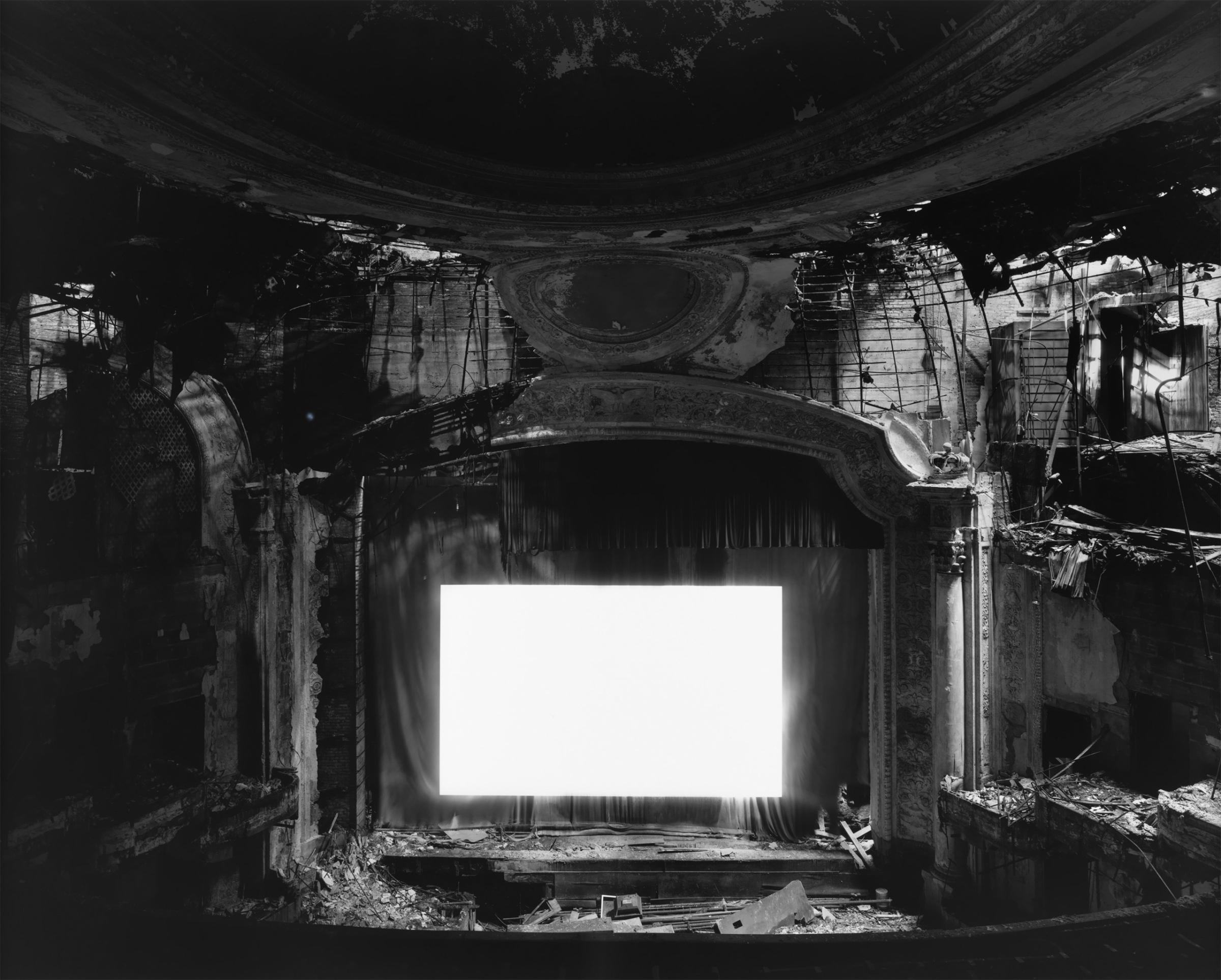
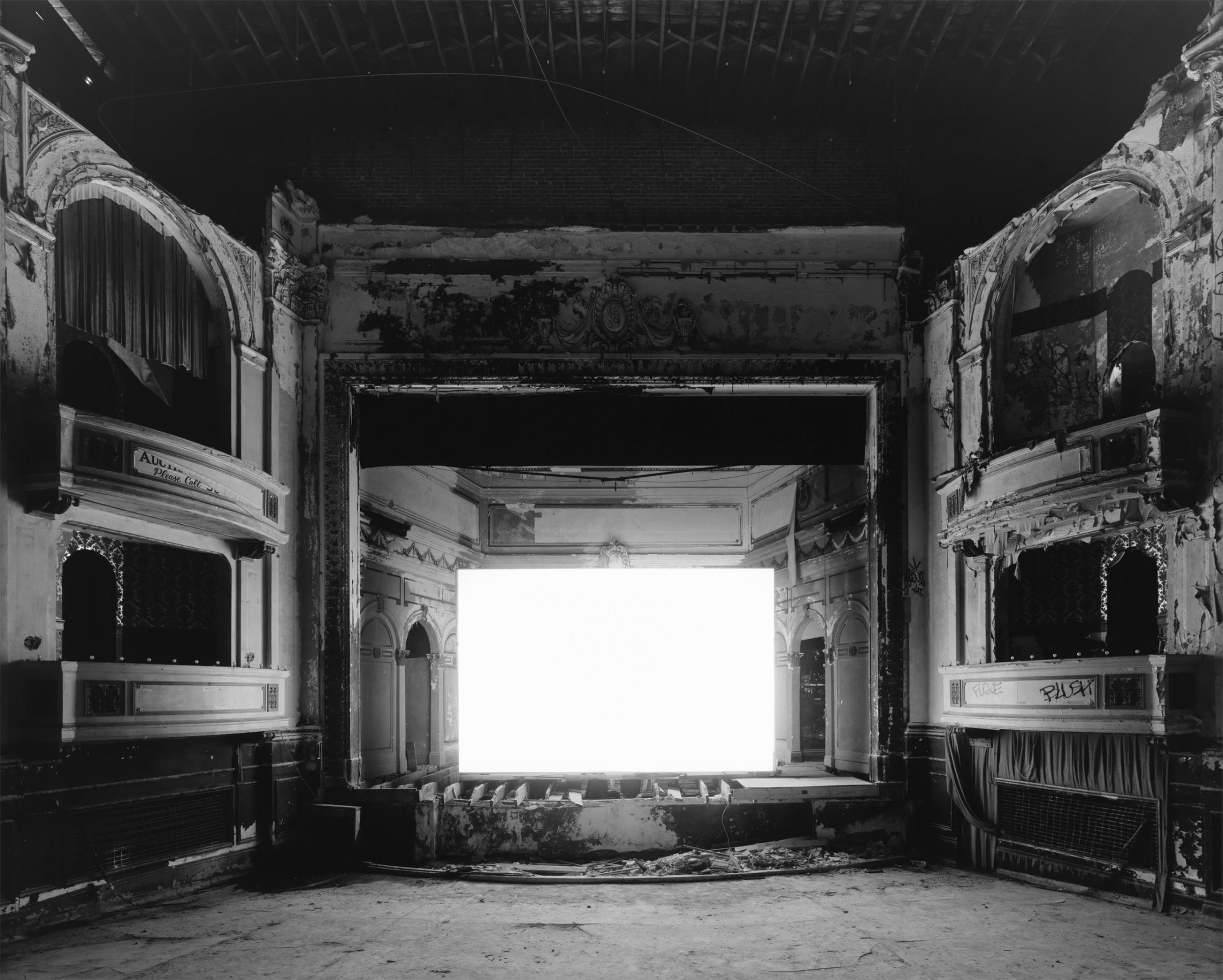
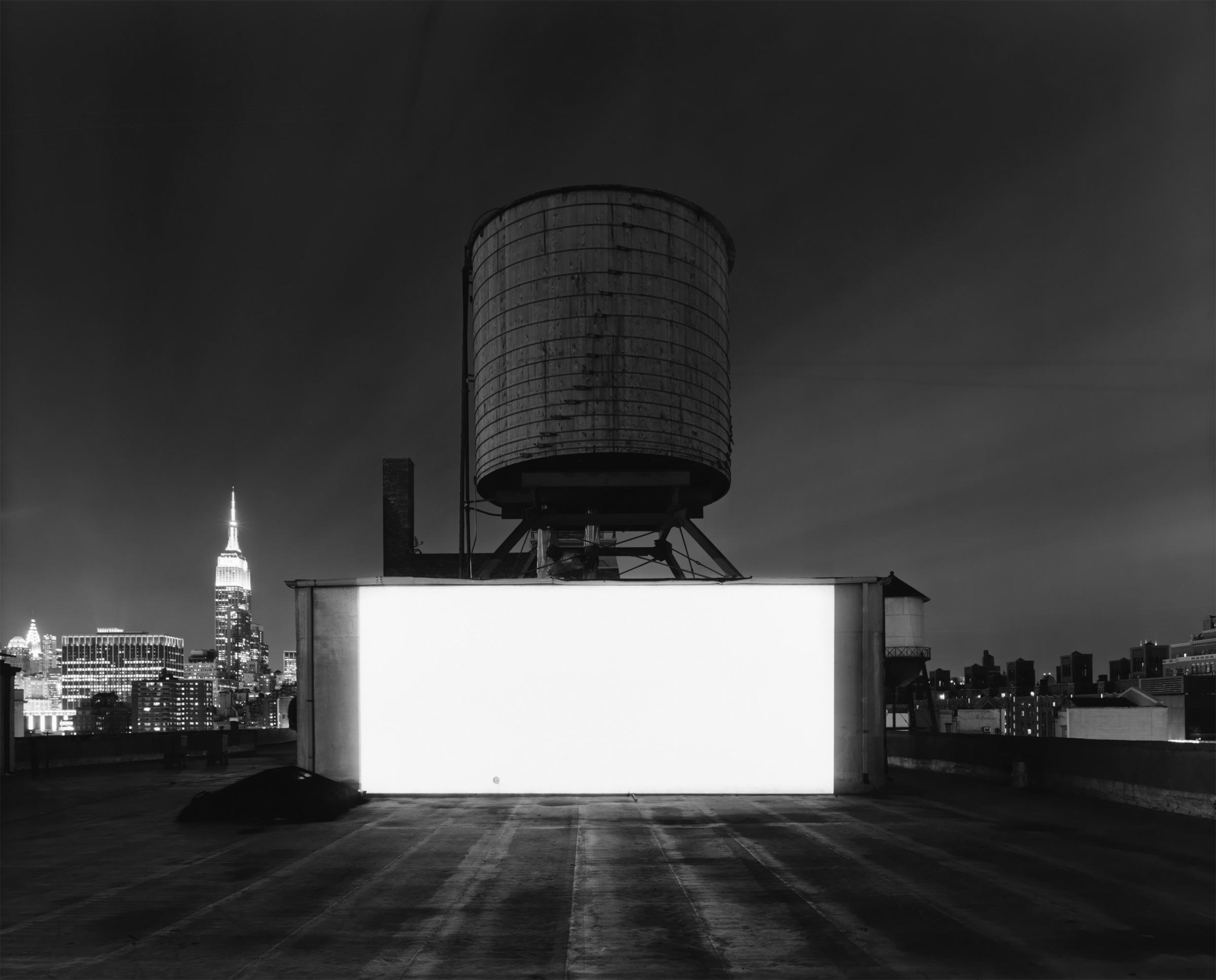

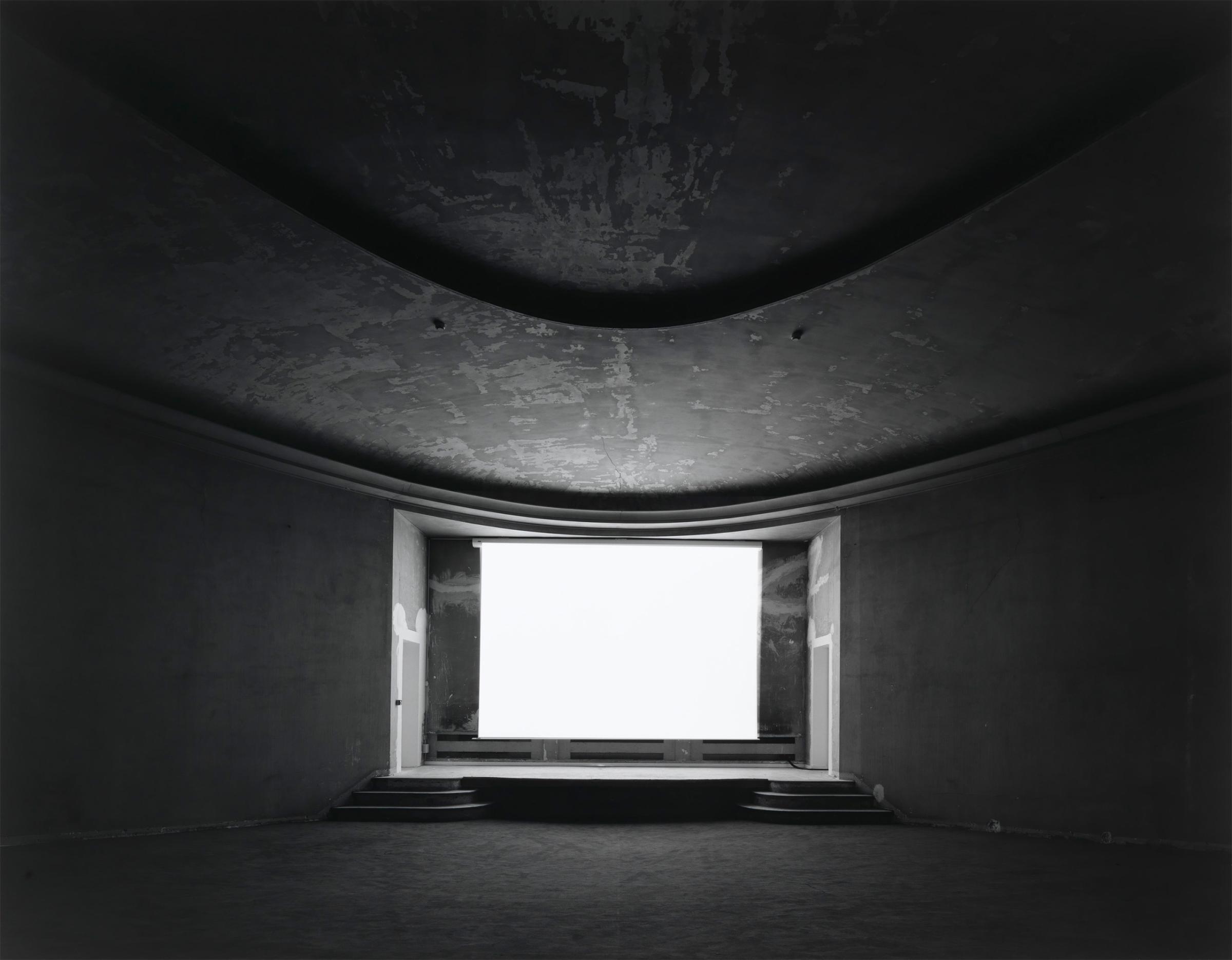
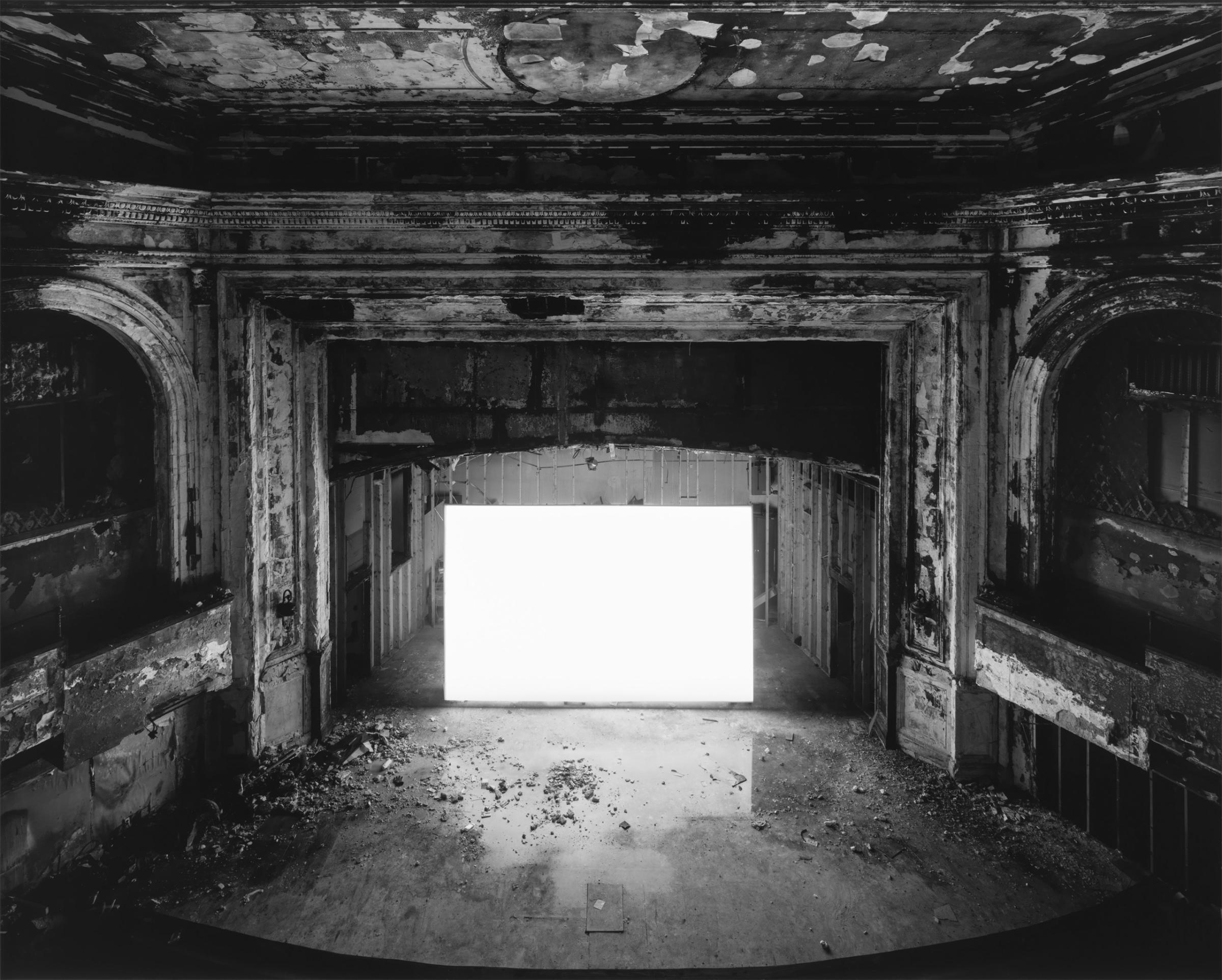
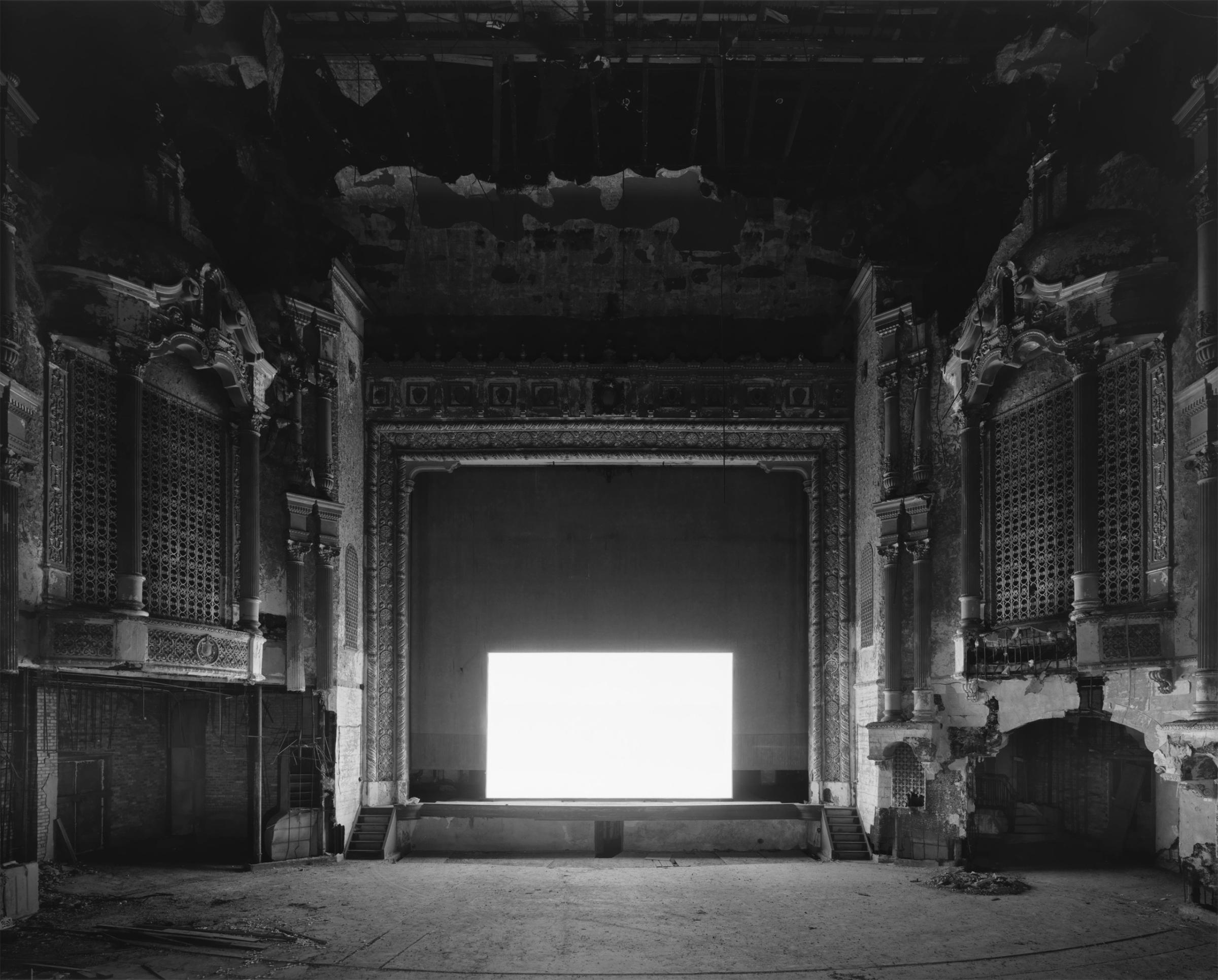
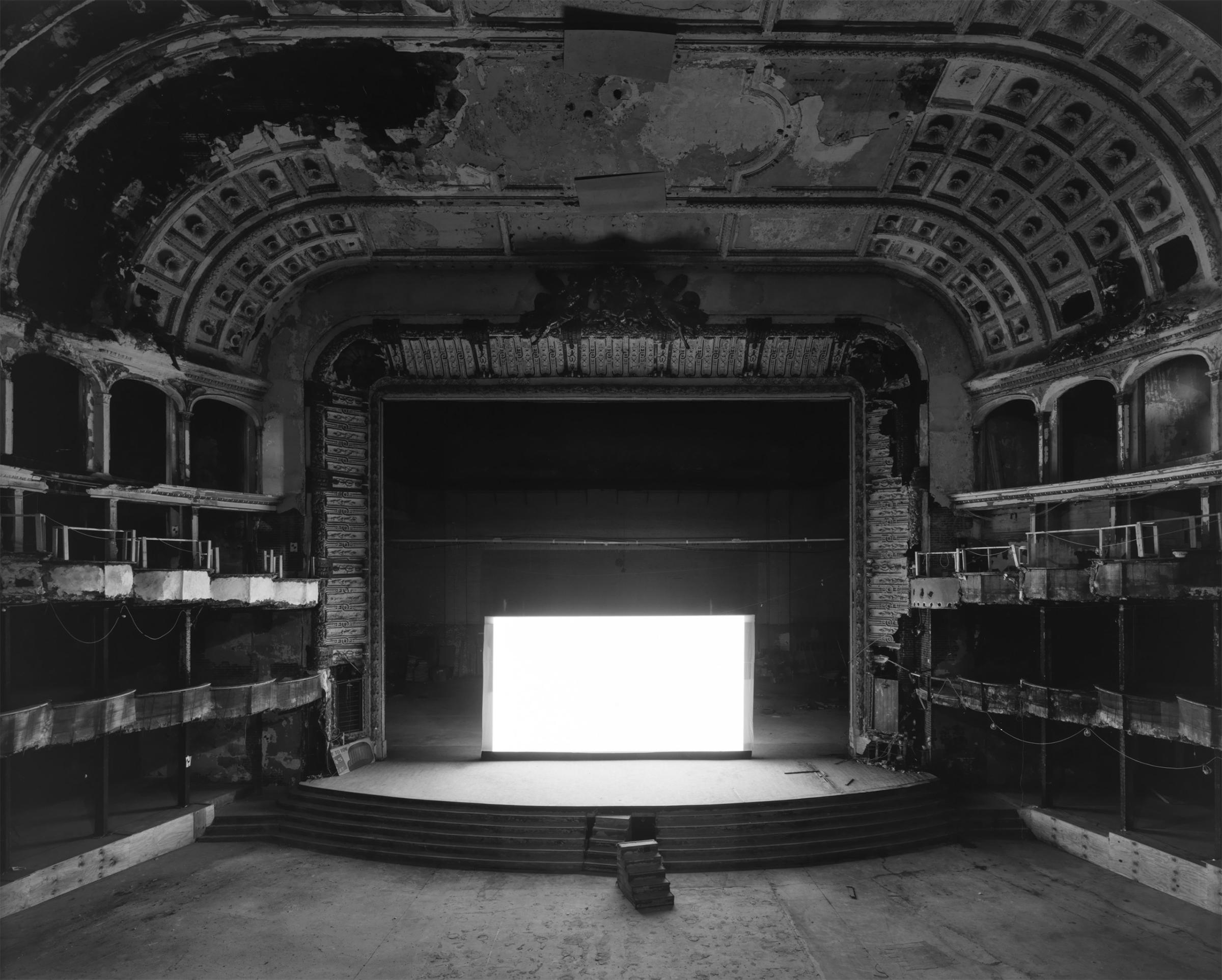

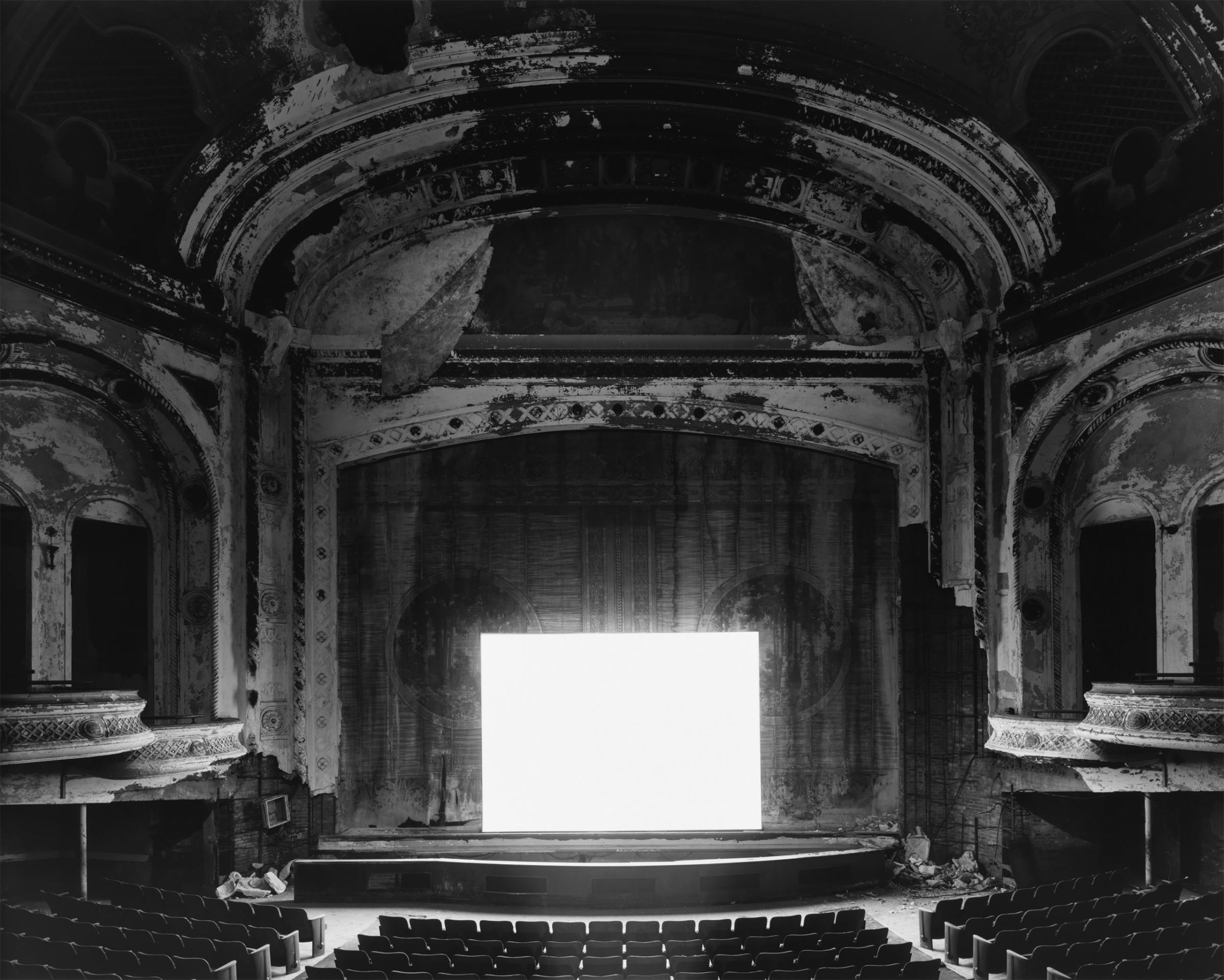
More Must-Reads From TIME
- Dua Lipa Manifested All of This
- Exclusive: Google Workers Revolt Over $1.2 Billion Contract With Israel
- Stop Looking for Your Forever Home
- The Sympathizer Counters 50 Years of Hollywood Vietnam War Narratives
- The Bliss of Seeing the Eclipse From Cleveland
- Hormonal Birth Control Doesn’t Deserve Its Bad Reputation
- The Best TV Shows to Watch on Peacock
- Want Weekly Recs on What to Watch, Read, and More? Sign Up for Worth Your Time
Contact us at letters@time.com